Introduction
It is safe to say that the talent pool nowadays is more diverse than ever before. When we look at US college graduates, women now outnumber men, and representation from people of colour is on the upswing. But, a decade ago, finding a tech startup even mentioning diversity or inclusion in their IPO paperwork was a rare sight. And the big Fortune 500 companies hardly ever talked about it with their shareholders. Fast forward to today, having a solid diversity, equity, and inclusion (DE&I) plan is pretty much a no-brainer.
As a crucial piece of the talent acquisition (TA) puzzle, let’s look at how to accelerate these initiatives in a responsible and authentic way.

Setting the Stage: From Intent to Impact
Too often, we see organizations lumping a multitude of communities under the big umbrella of “diversity.” It might look like a convenient shortcut, but it actually does a disservice. It ignores the unique challenges each community faces and makes it more difficult to address specific needs.
Also, understanding what diversity means for your organization can be a puzzle. Some see it as bringing in more talent from underrepresented demographics. For others, it may mean shaking up the complete hiring process to fight bias or addressing salary differences tied to gender, race, or ethnicity. But the bottom line is, for each organization, it is essential to nail down what diversity means for them to set the right goals.
Needless to say, it is not a simple task.
Companies often get fixated on numbers. Thus, trying to understand current demographics to define goals or simply to increase transparency by publishing the numbers. Understanding the lay of the land is a great place to start – not to end. We have seen many organizations overhaul at this stage, rushing in with hard-to-achieve goals, focused almost solely on numbers. But what follows next is a never-ending chase for those statistics, ignoring feedback in the process.
What really complicates the journey from intent to impact is the rush to fix all DE&I issues at once. Businesses often overlook that onboarding more diverse talent without proper infrastructure, resources, or plans to support them within the organization may cause more harm than good.
So, if you are aiming for that game-changing impact, start by taking a moment to listen to what your employees and prospective candidates have to say. They have got the goods on what needs fixing and how to do it. They are not only your best resources in this process, but they will also be your biggest advocates – or critics!
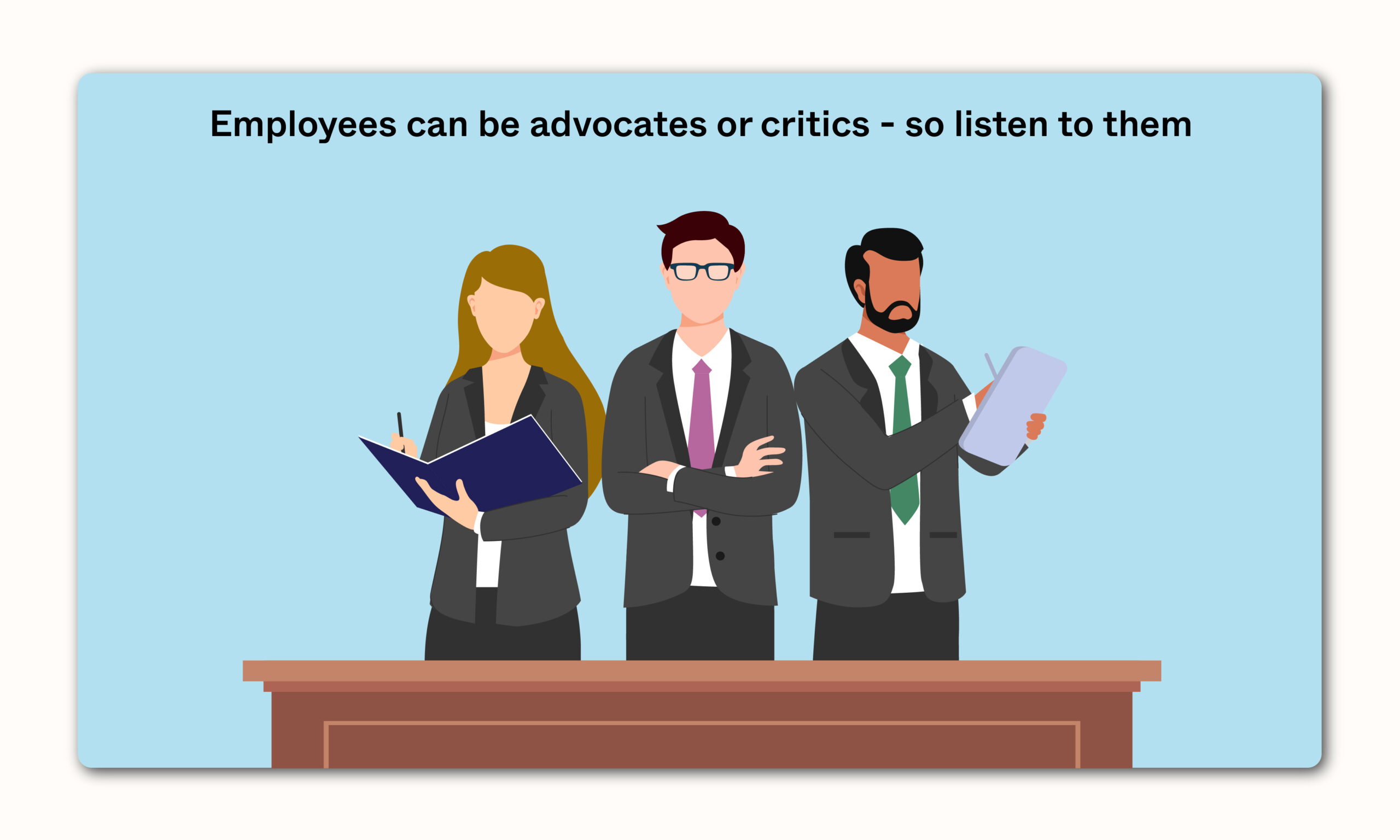
Building Your Diversity
Hiring Vision, Goals, and Reporting
Well-defined diversity goals help track progress and support sustainable, long-term change in your organization. Let’s break down the steps for building a diverse team:
1. Collecting and decoding organizational data
When looking at diversity, there is a whole mix of factors to consider. Things like where you are located, what industry you are in, your company size, the different departments you have, and the levels of experience throughout the organization – all play a part in shaping our idea of “diversity” (which includes gender, ethnicity, background, abilities, and more).
The first step is getting to know the team makeup and how it compares to the larger job market, teasing out inequalities based on demographics. Collecting data about gender, age, religion, sexuality, ethnicity, employee experience, and learning styles (to name a few) helps you get a real picture of diversity within the workforce. In turn, use this data to help identify which policies are helping or hindering, and pinpoint areas that need improvement.
Human resource information system (HRIS) data is a great place to start. In addition, employee surveys and focus groups can help you better understand the nuances of religion, sexual identity, neurodiversity, etc. If you are doing this for the first time, some of your team members might be a tad cautious about sharing all this info. So, make sure they know their privacy and data are in good hands, by setting up clear guidelines to keep everything anonymous and confidential. Here, you may want to consider using third-party services to ensure that collection, storage, and reporting meet legal guidelines, as well as organizational best practices.
2. Highlighting needs and concerns
Collecting and analyzing employee demographic data will highlight areas in need of attention, such as:
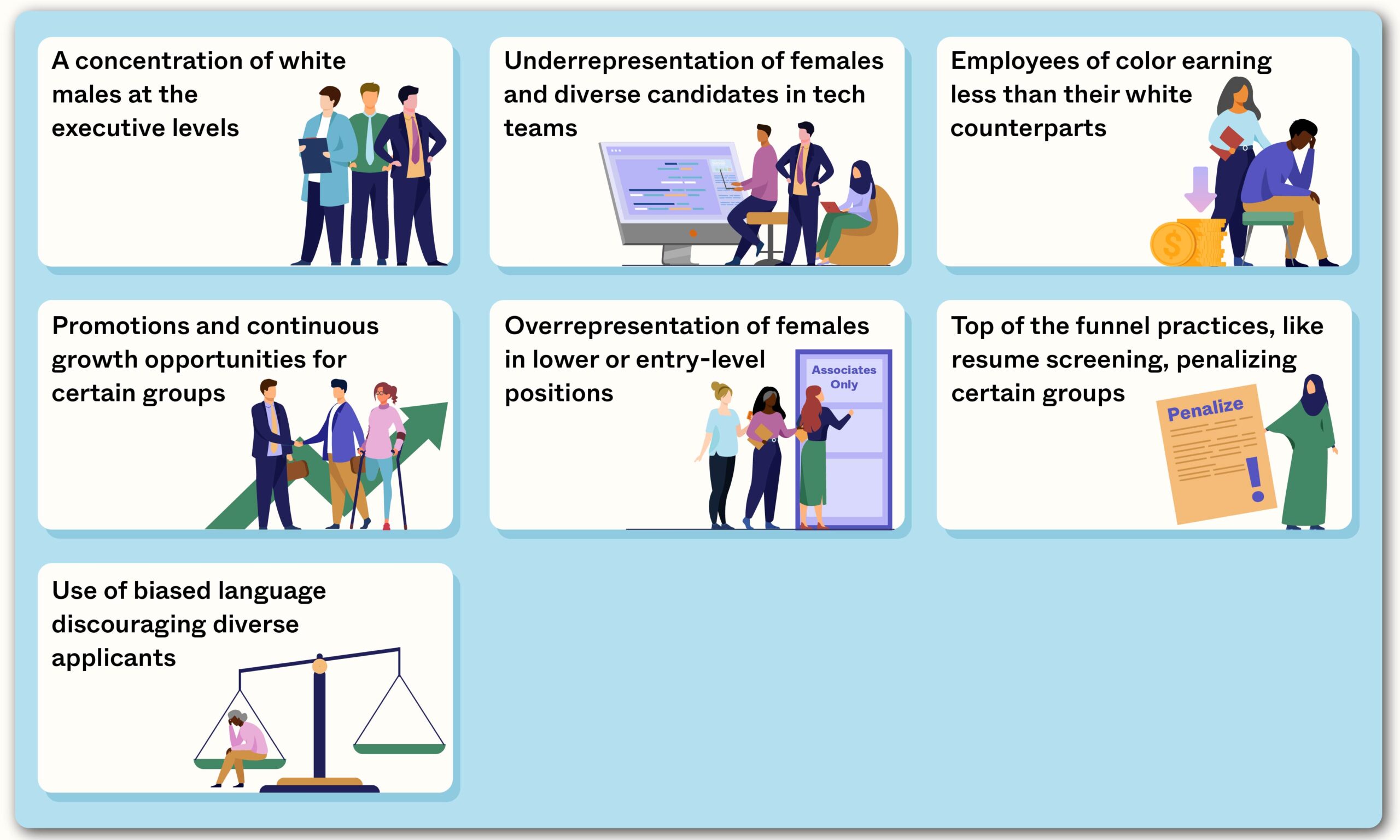
Here is another opportunity to gather data to better understand employee perceptions of your organization’s diversity initiatives. Ensure anonymity and encourage employees to provide honest feedback about company culture, hiring practices, and related policies. If your surveys do not paint a clear picture or employees are hesitant to share feedback, it might hint at a trust issue. Partner with a third-party vendor to ensure data privacy and credible dissemination of the results.
3. Define diversity goals
After the collection, consolidation, and analysis of data is done and dusted, it is time to start working on diversity hiring goals. This will include identifying how a more diverse workforce will impact the business and align with organizational values. Take a tip from Deloitte, for example; they aimed high, targeting a 50% increase in Black and Hispanic/Latinx pros in their US team. By 2022, they had already notched an impressive 43.8% boost.
When it comes to goal-setting, keep your eyes on the stuff that makes sense – the stuff you can realistically achieve and track. Begin with something modest, and then keep on building.
Mobilizing Your Organization
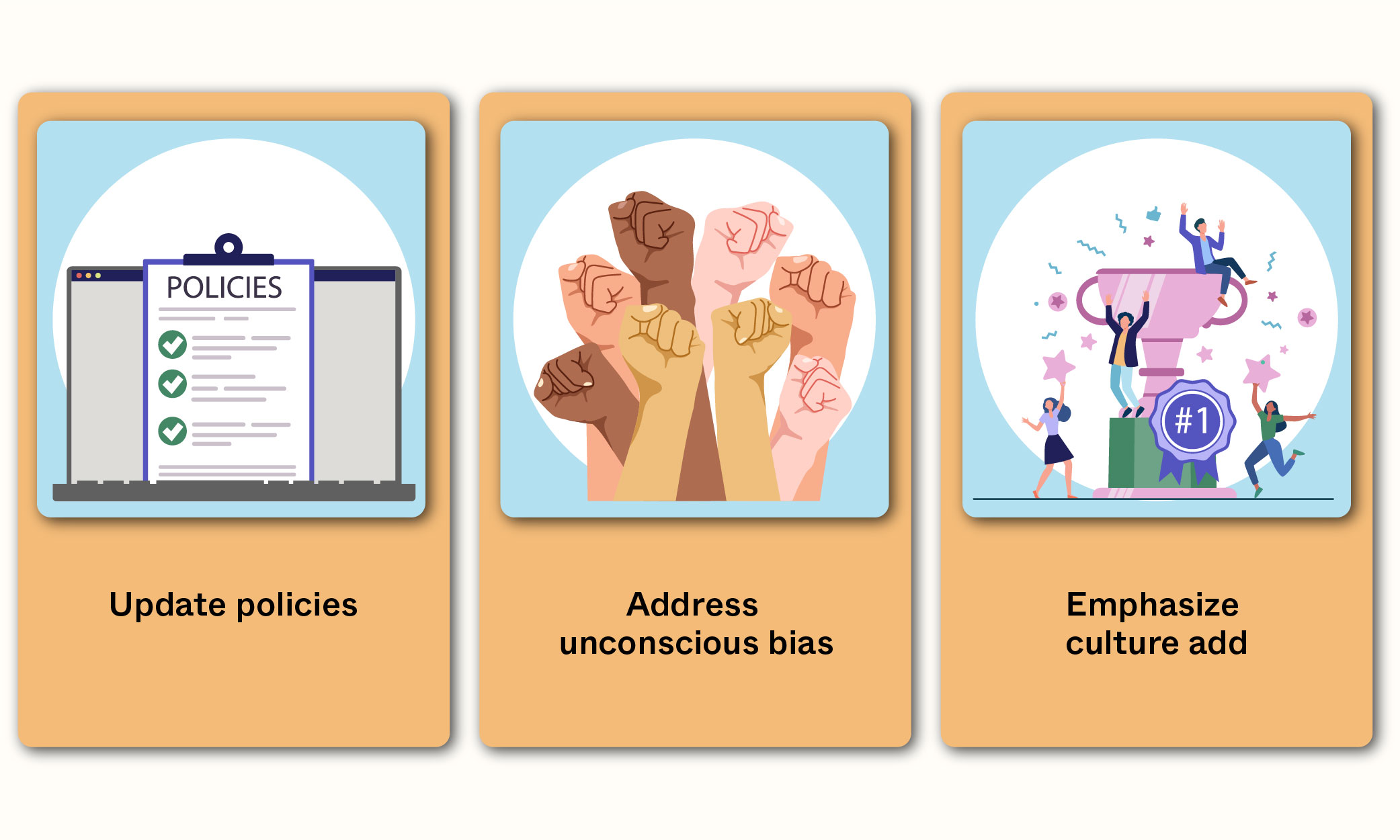
Building a workplace that truly values diversity is not something that falls on one person’s shoulders. It is not limited to a single department (like HR) either. It is a team effort, getting the whole organization on board to create a place that’s inclusive, safe, and equitable. That is how we fuel growth.
Updating diversity policies: Outlining policies to make sure candidates from diverse backgrounds have a warm welcome. Think parental leaves, menstrual leaves, childcare support, eldercare support, and finding healthcare providers who are in tune with the LGBTQIA+ community’s unique needs
Addressing unconscious biases: The key is continuous diversity and anti-racism training, along with a healthy dose of education. This helps create a safe space where diverse candidates can freely voice their thoughts, ask questions, and stand up for themselves.
Emphasizing culture add: Sometimes when a particular group takes center stage, we unconsciously lean toward candidates who seem like a mirror image of our current team, inadvertently keeping out candidates from diverse backgrounds. Instead, bring in candidates based on the culture they bring, not how similar they are to existing employees. Plus, take a good, hard look at historical data on past practices, promotions, and merit increases. That way, you can build a culture where everyone feels empowered and safe.
It is critical to work with your candidates, not against them.
1. Measuring and reporting outcomes
Evaluating impact is crucial. While it may seem complicated to measure specific aspects, you can obtain insight from employee engagement, performance, retention, participation, and experience rates.
Share your achievements with all stakeholders to showcase the value, impact, and return on investment (ROI) of your efforts. Make sure they realize that you paid attention during the goal-setting phase! This benefits everyone. Use presentations, infographics, quarterly reports, and diversity reports as effective tools to communicate your results. Being open and honest throughout the process demonstrates commitment, which will build trust with both your employees and potential candidates.
Here are a few good fundamentals to include when reporting:
- Experience and representation of (currently) underrepresented groups
- Leadership views on DE&I goals and strategies
- The company’s progress on DE&I goals
Understanding Underrepresented Job Seekers
According to a report, approximately 80% of companies are just going through the motions, lacking accountability. The report also highlights that DE&I training, recruitment practices, employee resource groups, and many other DE&I efforts tend to have “little or no long-lasting” impact when implemented in isolation.
As issues of diversity and inclusion have taken center stage, the public has become increasingly aware of inauthentic attempts to promote DE&I. In a separate report, Josh Bersin highlighted active listening and the subsequent actions organizations take as the most influential factors in advancing diversity, inclusion, and a sense of belonging. “Listen, hear, and act” emerged as the most important among more than 80 practices analyzed.
According to a survey by Glassdoor, a solid 76% of candidates and employees place high importance on a diverse workforce when evaluating job offers. This is particularly important for underrepresented individuals – almost one-third (32%) would think twice about applying to a company that lacks diversity. Notably, this figure is higher among Black (41%) and LGBTQIA+ (41%) individuals.
Research indicates that job seekers are increasingly interested in a company’s DE&I efforts. Consequently, most companies have established specific diversity hiring goals for race and ethnicity (63%), gender (54%), age (37%), veterans (33%), LGBTQIA+ (29%), immigrants (28%), and disabilities (25%).
Designing an Inclusive Brand and Candidate Experience
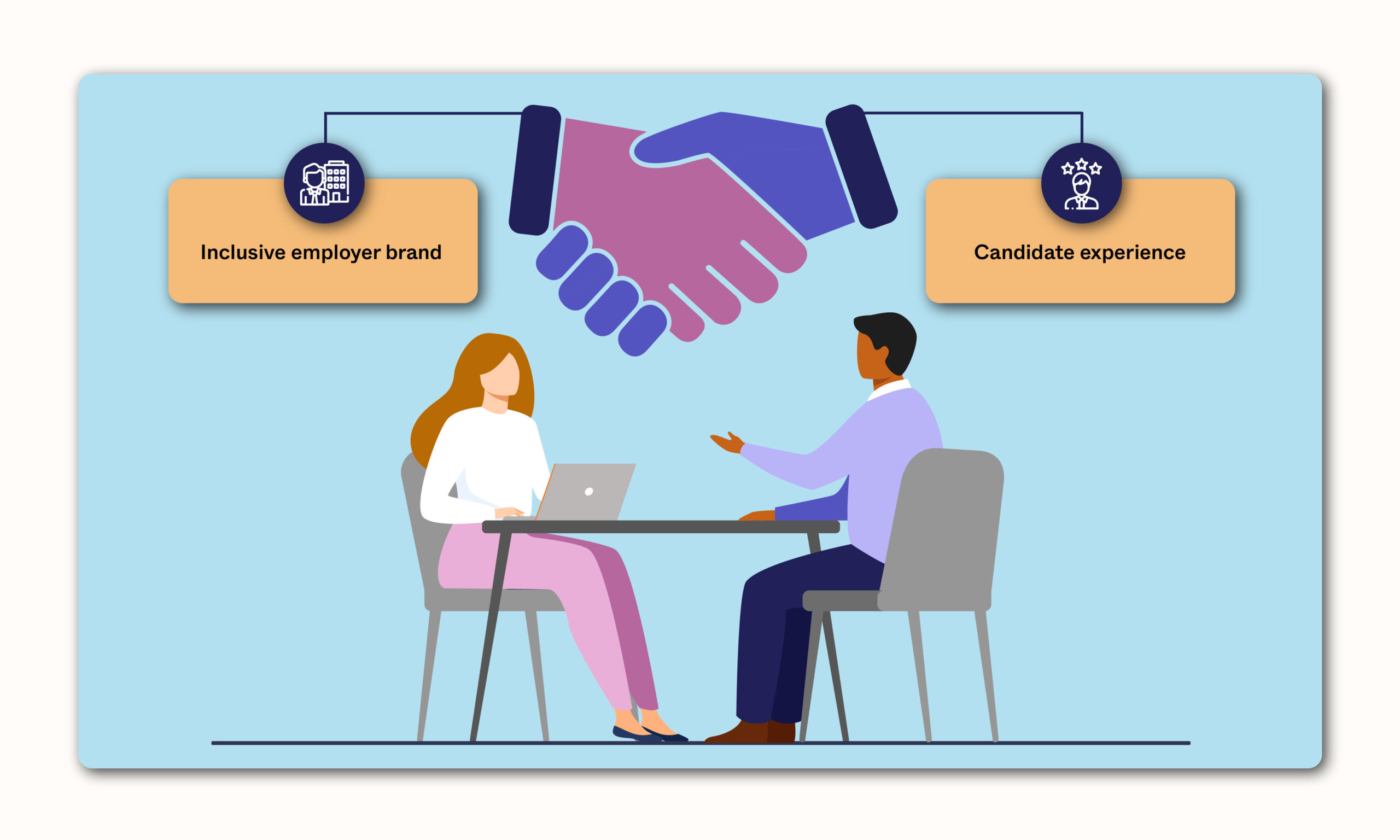
When you focus on being inclusive, it not only boosts how well your employees do but also makes the job application experience better. A survey by McKinsey found that while everyone faces barriers, women, ethnic and racial minorities, and LGBTQIA+ folks often encounter even more challenges.
This just shows that while companies aim for diversity in their hires, they may miss the mark in providing a positive experience. When individuals apply for jobs, they think about their future colleagues and whether the company’s values align with their own. They might have questions such as:
- Do you support social causes and participate in community work?
- What are your diversity demographics?
- How does the organization perform against DE&I goals and promises?
- Do employees – particularly those from relevant communities – have positive things to say about their experience?
- Is there diversity in your leadership and management teams?
Given social media, it is very easy for candidates to find answers to these questions on their own, so you had better be prepared with your response!
Earlier, we mentioned authenticity, which is a significant contributor to successful employer branding and DE&I. So, how do you go about building an authentic brand, driven by inclusivity and consistency?
An authentic brand keeps it real by sticking to its message, promises, and values, no matter who’s in the spotlight – customers, employees, job seekers, investors, suppliers, or the local community. Employer brand is not simply a talent acquisition activity. Rather, it’s tightly linked to your values, culture, and how the world sees your brand. Building an authentic employer brand is about telling compelling stories on topics that are important to your audience. With the right mix of content and data, you can engage and build relationships with candidates.
But how does employer brand really help candidate experience?
Candidates interact with a brand online and every interaction influences their perception. Here’s what you can do to ensure you send the right message:
- Keep your hiring process efficient, smooth, and objective for all candidates. When you ensure that everyone goes through an objective hiring process, you are cutting down on bias. Tools like an applicant tracking system (ATS) and a candidate relationship management (CRM) platform can help you stay connected with candidates in a dynamic way.
- Ensure that candidates have support to navigate the process.
- Train the TA team and other stakeholders to recognize and address unconscious bias. During the interview stage, decide on questions in advance, update the interviewers about the role and help them prepare.
- Don’t keep candidates waiting. Try to make your hiring decisions within a week and communicate the outcome with candidates.
- Ask candidates for feedback and incorporate it in your upcoming hiring cycles.
Writing Inclusive Job Ads and Candidate Communication
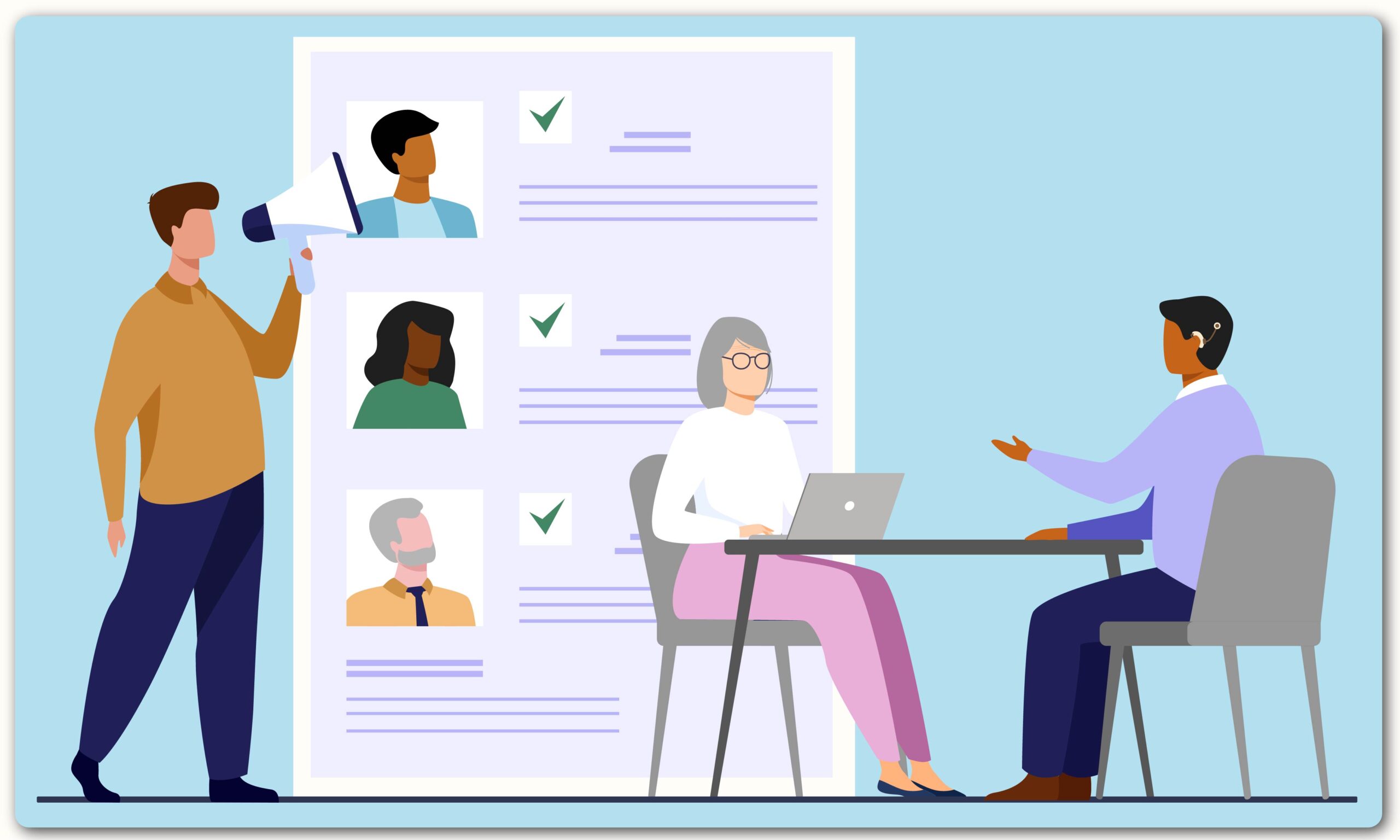
While organizations strive to incorporate DE&I initiatives, deeply entrenched hiring practices might sabotage plans.
For one, job descriptions can sometimes be a real headache because they often contain far-fetched expectations that just don’t add up. For example, requiring two to three years of work experience for an entry-level position might turn away recent graduates. It also might get you roasted on social media!
When writing job descriptions, focus on absolute qualifiers rather than preferences. Also, avoid outdated descriptions and biased language, which may deter women, members of the LGBTQIA+ community, and members of racial and ethnic communities from applying.
This is not limited to job descriptions and ads, and applies to all candidate interactions. Here’s how you can encourage an inclusive approach to communication:
1. Avoid biased language
The way you communicate says a lot about your company culture and can influence job seekers’ decisions. Tackling biased language might seem small but takes effort and a keen eye for detail. When writing job descriptions, ads, or any messages, watch out for these cues:
- Titles like “salesman” or “saleswoman” are gender-biased. Similarly, using only “he” or “she” pronouns disregards gender-neutral and non-binary individuals.
- Some soft skills and certain qualities have gendered connotations. For instance, words like ‘compassionate,’ ‘collaborative,’ and ‘understanding’ are associated with women, while words like ‘confident,’ ‘skilled,’ and ‘influential’ are associated with men. Swap these for more gender-neutral language that welcomes all candidates, regardless of their gender identities.
- Phrases like ‘native-English speaker’ and other terms like ‘cakewalk,’ ‘blacklist,’ ‘whitelist,’ etc., also promote bias and may discourage individuals from underrepresented communities.
- Another commonly used term, ‘able-bodied,’ excludes disabled people. Instead, mention if the role requires heavy lifting or standing for extended periods of time. Also, avoid terms like “non-smokers only” or “no smokers,” as this discriminates against a protected class.
- Similarly, terms like “digital native” imply a bias against senior professionals, while asking for significant experience can disregard early-career professionals. So, review your job ads for ageism as well.
- Avoid statements that include “must.” It may come across as aggressive and can often lead to discriminatory language, such as “must qualify based on a background check.”
While seemingly small, awareness of these linguistic biases helps draft fair, precise, and welcoming communications.
2. Rethink educational requirements
Unnecessary and rigid educational qualifications can be a real roadblock for people from low-income backgrounds. College is not always accessible to everyone. Organizations are now understanding and even advocating for wider acknowledgment of skills and experience acquired outside of higher education. Notably, when hiring for certain tech roles, organizations are making it a point to put more focus on skills-based training.
Educational qualifications do not guarantee expertise, ability, or commitment.
Rather than sticking rigidly to the requirement of a four-year degree, take a moment to outline the key skills your perfect candidate should possess. By doing so, your job postings can attract a more diverse and qualified set of applicants, enriching your pool of potential hires.
3. Highlight compensation and benefits
Traditionally, salary ranges or benefits are not included in a job description. With an increased focus on transparency and equal pay, this is definitely changing. In fact, states like Colorado, Nevada, Connecticut, Washington, Maryland, and Ohio require employers to disclose salary information related to job postings.
This is also an opportunity to highlight inclusive benefits like child and eldercare support, paid parental leave, health and wellness plans, tuition assistance, flexible scheduling, and remote work options to convey your commitment to building an inclusive workplace culture that prioritizes employee wellbeing.
4. Reaffirm your commitment to diversity
Job ads are a great place to reaffirm your commitment to diversity, equity, and inclusion. While most organizations have DE&I statements on their website, it is also a good idea to include this in your job ads. For example, emphasizing that you are an “Equal Opportunity Employer” encourages candidates from all backgrounds to apply.
Let’s see how you can optimize your sourcing to build a strong pipeline of diverse candidates.
Make your candidate database work for you and create experiences that convert. Meet MOJO Engage CRM.Struggling to Build Meaningful Relationships with Candidates, Across Channels?
Diversity Sourcing
While writing an inclusive job description in your recruitment ads is pivotal for diversity hiring, it’s only the beginning. To truly make an impact, it’s essential to have the right sourcing channels and tools in place. For recruiters handling a high volume of positions, adopting programmatic recruitment advertising, across diverse job boards, both broad and niche, allows you to connect with candidates where they’re most active. This approach streamlines the distribution of jobs from your career sites or ATS to a network of publishers, aligning with your unique hiring goals.
You can focus on publishing job ads on LGBTQIA+ job boards, i.e., Campus Pride, LGBT Connect, and Pink Jobs LGBT, or promote opportunities in social media groups dedicated to LGBTQIA+ employment. Other job boards like Diversity.com, iHispano, PDN Recruits, PowerToFly, Female Executive Search, help you reach women, Black, and Hispanic/Latinx candidates.
In addition, data from your job ad and recruiting funnel will tell you how many diverse candidates you have reached and hired through your ads. You can also monitor the source, know where they are in the recruitment process, and examine dropouts.
Conclusion: Fostering a Diversity Culture
Organizations can no longer afford to sweep diversity challenges under the rug. Candidates and employees are now demanding better support in the recruitment process and across the organization. TA professionals can
hire candidates from underrepresented communities by revamping their job descriptions, adopting alternative sourcing channels, and addressing bias in the hiring process, but the buck doesn’t stop there!
When developing a company culture grounded in the values of diversity, equity and inclusion, it is crucial to ensure that employees feel safe. Here are some questions to reflect on to help evaluate if you are fostering an open and diverse culture:
- Are employees comfortable speaking up? Are you actively listening and facilitating honest conversations about diversity?
- Does your work environment enable people to be their authentic selves?
- Do applicants have someone like them on your team?
- How are you expanding your talent pool to meet diversity hiring goals?
- Are you helping your candidates design their own career development pathways? Do all candidates have similar opportunities?
- Are you sharing learnings with your business partners to multiply impact beyond the walls of your company?
Keep these questions in mind and revisit them periodically to help build an authentic, safe, and truly diverse organization.
Ready to take your diversity hiring to the next level? Let us show you what we can do! And don’t forget to follow us on Twitter and LinkedIn.
FAQs
What is DE&I hiring?
DE&I hiring refers to the practice of actively seeking and recruiting candidates from diverse backgrounds, including those of different races, ethnicities, genders, sexual orientations, abilities, and more. The goal of such hiring is to create a more inclusive and equitable workplace.
Why is diversity hiring important?
Diversity hiring is crucial for creating a more inclusive and equitable workplace that reflects the diverse society we live in. It fosters innovation, improves employee engagement and morale, and helps companies better understand and serve diverse customer bases.
What are the benefits of a culturally diverse workforce?
A culturally diverse workforce brings a wide range of perspectives, ideas, and experiences to the table, leading to increased creativity, innovation, and problem-solving. It can also improve employee productivity and enhance the company’s reputation as an employer of choice.
How to incorporate DE&I in hiring?
To incorporate DE&I in hiring, companies can start by reviewing their job descriptions and recruitment processes to ensure they are inclusive and free from bias. They can also implement diversity training for hiring managers, use diverse interview panels, and actively source suitable candidates from underrepresented groups.














